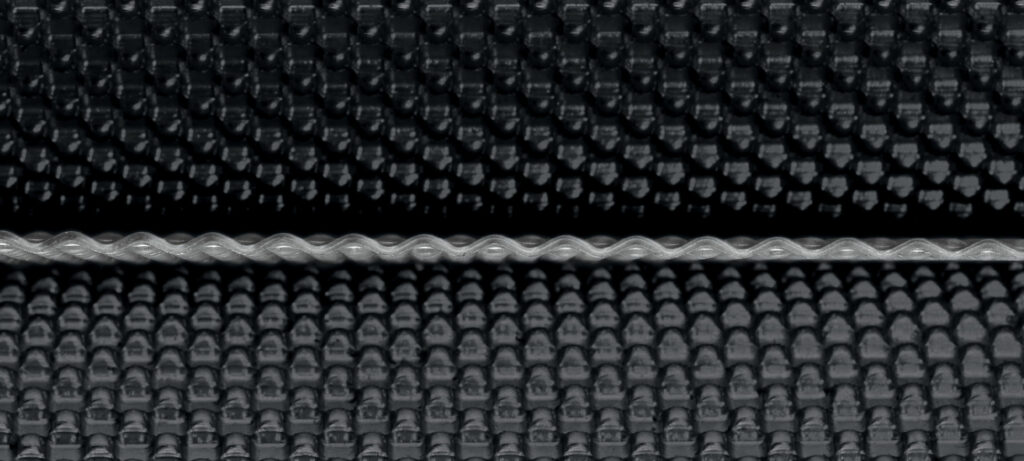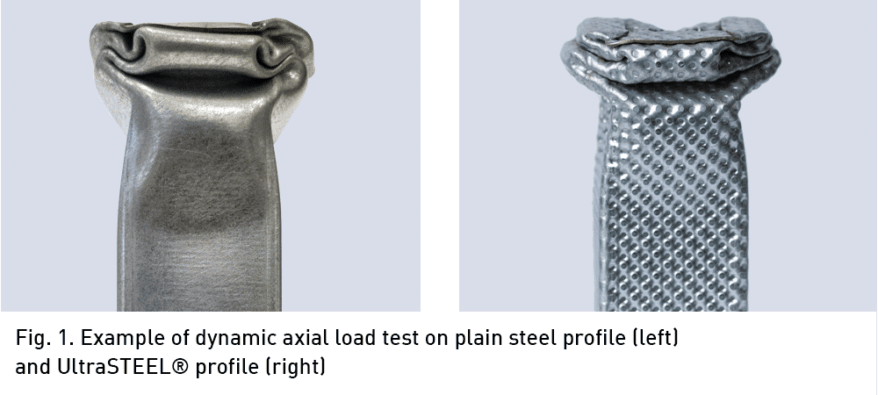
UltraSTEEL® testing concludes new proven benefits!
UltraSTEEL® profiles have obtained positive test data and confidence to state that UltraSTEEL® has additional unique benefits over plain steel profiles.

We recently commissioned a 3-Year PhD research project on the impact resistance of our patented UltraSTEEL® process.
In partnership with the University of Sussex, further experimental testing and numerical analysis on UltraSTEEL® profiles have obtained positive test data and confidence to state that UltraSTEEL® has additional unique benefits over plain steel profiles.
Over 30 years ago we identified that there are a number of advantages which can be achieved by altering plain surface steel to a dimpled surface (UltraSTEEL®), which are beneficial when applied in thin-walled products.
Ce Liang, PhD candidate tested UltraSTEEL® profiles to investigate the behaviour of UltraSTEEL® profiles under axial and lateral impact loads compared to plain steel profiles. Ce’s methodology consisted of using both numerical simulations coupled with physical testing methods for validation purposes e.g. analysis of a component’s performance when subjected to dynamic crushing loads, as conducted at Warwick University, Fig. 1.
Ce Liang, PhD candidate, commented: “Improving resistance against impact loads has become an intense research topic as it promotes lightweight design for vehicles and infrastructures. The UltraSTEEL® rollforming process appears to be very promising in absorbing kinetic energy, thanks to increased strength of material and dimpled geometry.”
During the simulation and experimental testing of dynamic axial crush testing it was found that the UltraSTEEL® columns showed up to 10% more energy absorption and increased buckle resistance than plain steel columns. This finding shows an overall performance improvement when UltraSTEEL® columns are subjected to a more representative real world application. In addition to this finding, extra energy of impact loads can be absorbed through wall to wall interaction in dimpled multi wall columns. This interaction can be further promoted by increasing the number of walls, thus increasing the normal pressure between walls.
Additional analysis has also been conducted to understand the response of UltraSTEEL® columns when subjected to lateral impact loads. This analysis consisted of columns which were fully fixed at the one end and simply supported at the other, with constant axial compressive loads applied at the supported end. The crush efficiency of the dimpled column was 7.2% higher than its plain counterpart when the columns were not carrying any axial load and up to 24.3% higher than the plain counterpart when axial compressive loads were applied.
Dr Martin English, Group Technical and Development Manager, concluded: “Through many years of standard plate, tensile and product testing, we have always known the post-failure behaviour of UltraSTEEL® was very different to plain materials. This prompted a debate about whether new benefits of the process could be uncovered through destructive testing methods, which this PhD project has proven beyond doubt. We are now keen to explore novel applications for UltraSTEEL® products that could benefit from these findings, which could take the Hadley Group into new industries and markets.”
Dr Martin English, Group Technical and Development Manager, concluded: “Through many years of standard plate, tensile and product testing, we have always known the post-failure behaviour of UltraSTEEL® was very different to plain materials. This prompted a debate about whether new benefits of the process could be uncovered through destructive testing methods, which this PhD project has proven beyond doubt. We are now keen to explore novel applications for UltraSTEEL® products that could benefit from these findings, which could take the Hadley Group into new industries and markets.”

